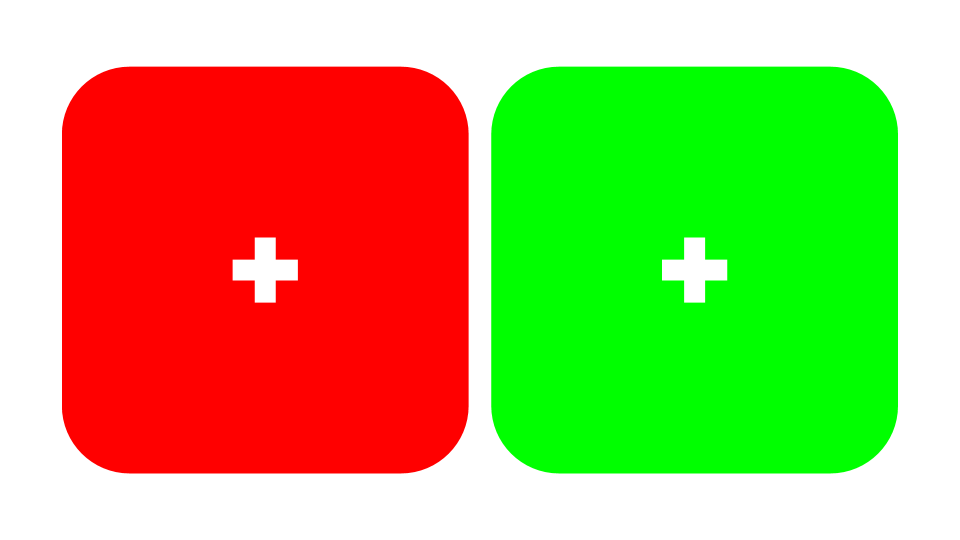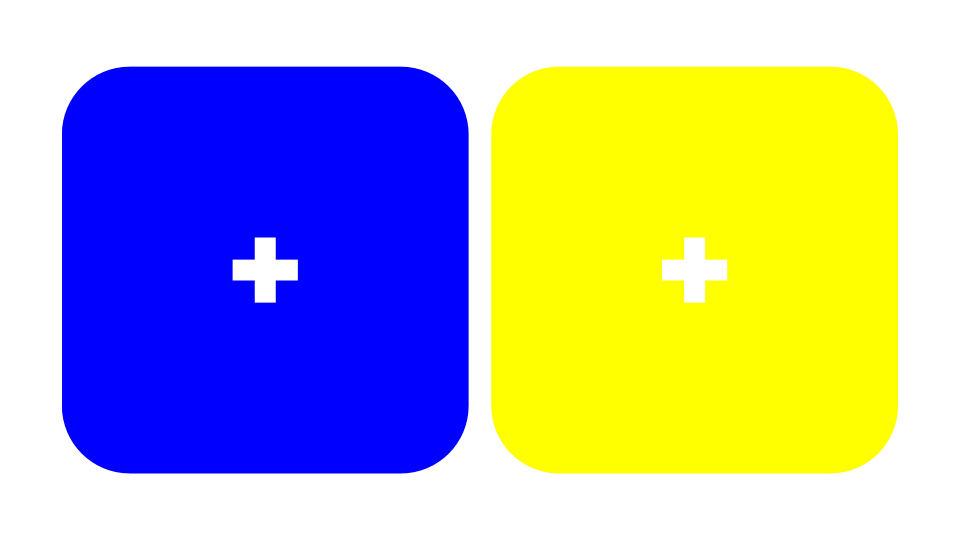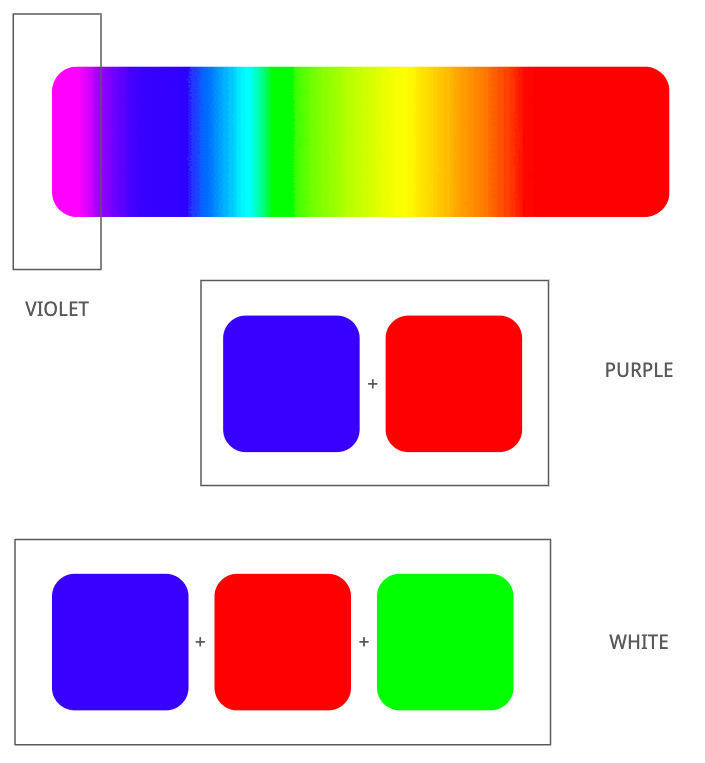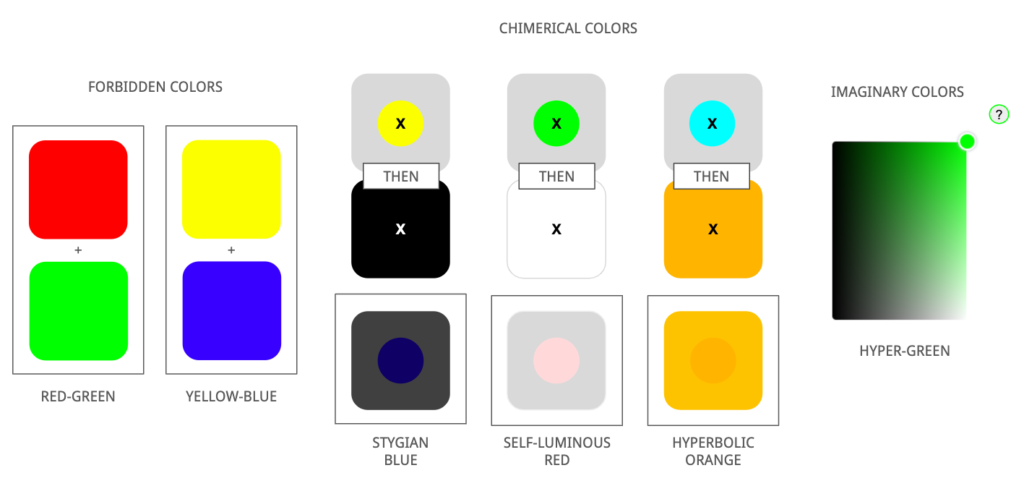We take the way we see the world for granted. But our experience of the world is shaped in part by our visual system—which is both extremely complex and limited. Impossible colors, which are sometimes called non-physical colors, are a great reminder to not consider our perception of the visual world the only possible experience.
Take birds who have great vision—the pigeon has once been described as “two eyes with wings”—with “double cones” which enable them to see ultraviolet wavelengths and give them sharp color vision. In contrast, the human eye only has three types of cone cells which allow the perception of three main colors: blue, green, and red. The cone cells register color in an antagonistic way:
- Red versus green
- Blue versus yellow
- Black versus white
According to the the opponent process theory, there is no color that could be described as a mixture of opponent colors. The same way you can’t have a number that’s both positive and negative, you can’t have a color that’s red-green or yellow-blue. These are impossible colors.
A rainbow of impossible colors
There are three main types of “impossible” colors:
- Forbidden colors. These are colors our eyes simply cannot process because of the antagonistic way our cones work, for instance “red-green” or “yellow-blue.”
- Chimerical colors. Again, these cannot be seen as a direct response to whatever color or colors of light the eye is exposed to, but they can be generated in the brain (specifically in the visual cortex), by looking at two colors in succession. The process involves inducing fatigue in your cones by looking at a saturated color, which temporarily changes their color sensitivities, and then looking at a markedly different color. Chimerical colors include “stygian blue”, “self-luminous red”, and “hyperbolic orange.”
- Imaginary colors. “Real” colors are basically colors that can be produced by a physical light source. Although “imaginary” colors are outside this spectrum and no physical object can have an imaginary color, they are often found in the mathematical descriptions that define color spaces. An example of imaginary color is “hyper-green.”
Confusing? Yes, very much so. I also had a hard time picturing these different kinds of impossible colors in my head and understanding the difference between them, so I made a nifty chart (click to enlarge).
If you want to try and see what a forbidden color looks like, there is some evidence that some people may in fact be able to perceive them. Use the template below by making your eyes cross so that both “+” symbols are on top of each other. You will find it easier on mobile.

You can also try it with yellow blue. What color do you see? Let me know.

What’s the deal with purple?
You may have heard that purple is not a “real” color. While violets are spectral colors, meaning there is a single wavelength of light for various hues of “violet”, “purple” is actually a combination of blue and red. Your brain interprets it as “purple.” Another example is white. White is not a wavelength of light, it’s a mixture of different spectral colors that our brain then perceives as white. Here is another chart.

“Impossible”, “imaginary”, “forbidden”, “chimerical”… There’s a whole world of colors outside ordinary visual functioning. Have fun!

